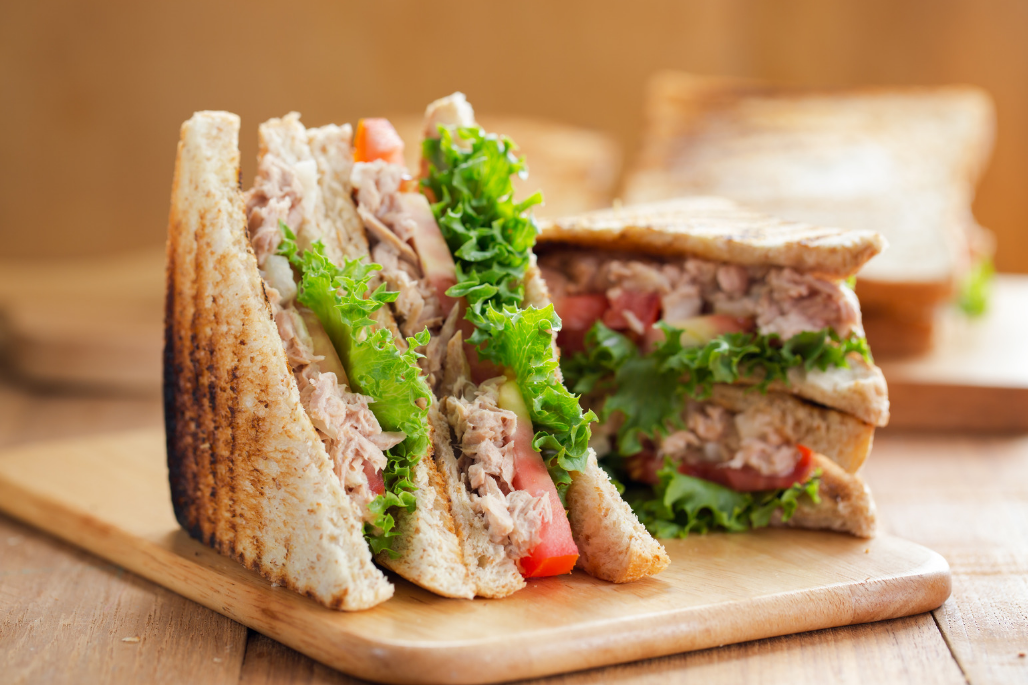As a diabetic you need to be cautious about the foods you eat. Some foods can cause your blood sugar to spike while others can help keep it stable. Tuna fish is one food that is often considered a good choice for diabetics. But is tuna fish sandwiches really a healthy option if you have diabetes? In this article we’ll take a closer look at the benefits and potential concerns regarding tuna sandwiches for diabetics.
An Overview of Diabetes and Diet
First, let’s quickly go over some basics about diabetes and diet. Diabetes is a condition where your body has trouble properly regulating blood sugar levels. There are two main types of diabetes
-
Type 1 diabetes is where your body does not produce enough insulin Insulin is necessary for transporting sugar from your blood into your cells for energy Type 1 diabetics must inject insulin to manage their blood sugar levels.
-
Type 2 diabetes is more common and happens when your body becomes resistant to insulin or does not make enough insulin. Type 2 diabetes can often be managed through diet, exercise and oral medications.
For both types of diabetes, carefully managing your diet is critical for controlling blood sugar. When you eat carbohydrates, they are broken down into sugar in your blood. Therefore, diabetics need to be mindful of their carb intake. Foods that are high in carbs, like bread, pasta and sweets, can cause blood sugar spikes after meals.
On the other hand, foods that contain protein, fat and fiber cause a slower, more gradual rise in blood sugar. Therefore, it’s recommended that diabetics focus on eating lean protein, high fiber veggies, healthy fats and limiting carb-heavy foods.
Now that we’ve reviewed some diabetes diet basics, let’s look at tuna fish sandwiches.
Nutritional Profile of Tuna Fish
Tuna fish is a lean protein that is low in saturated fat. Here is the nutritional profile of 3 ounces of canned tuna packed in water:
- Calories: 93
- Protein: 21 grams
- Fat: 1 gram
- Carbs: 0 grams
- Mercury: 23 micrograms
Tuna is an excellent source of protein without a lot of calories or carbs. The protein and healthy unsaturated fats in tuna help slow digestion, preventing a rapid spike in blood sugar after a meal.
However, tuna does contain a moderate amount of mercury. Mercury is a heavy metal that can build up in the body and cause health problems at high levels. Light tuna has lower mercury than white albacore tuna. The FDA recommends eating 8-12 ounces of low mercury fish per week as part of a healthy diet.
So tuna can be a healthy protein source for diabetics, as long as consumption is limited to avoid excessive mercury.
Benefits of Tuna Sandwiches for Diabetics
Now let’s look at how tuna sandwiches can fit into a diabetic diet:
1. Provides Lean Protein Without Carbs
Tuna salad sandwiches are a zero-carb way to get a good amount of protein. The protein in tuna helps you feel full and keeps blood sugar stable.
2. Can Be Lower in Carbs Than Other Sandwich Options
Bread contains carbs that raise blood sugar. However, tuna sandwiches can be made with low-carb bread options. Some good low-carb bread choices include:
- Lettuce wraps instead of bread
- High-protein, low-carb tortillas
- Bread made with almond flour or coconut flour
Choosing a low-carb bread alternative helps reduce the glycemic load of the sandwich.
3. Nutrient-Dense Meat Alternative
Tuna provides B vitamins, selenium, potassium and other minerals. It’s a more nutrient-dense protein source than deli meats which are highly processed.
4. Does Not Need Much Added Fat
Since tuna salad is already moist and flavorful, you don’t need to add much mayonnaise or oil. Limiting added fats makes the sandwich healthier overall.
5. Easy Portable Meal
Tuna sandwiches can be grabbed on the go for an easy work lunch or mid-day snack. Having healthy portable options is always good for diabetic meal planning.
Potential Concerns of Tuna Sandwiches for Diabetics
While tuna sandwiches can be a good choice, there are also some potential concerns to be aware of:
-
Bread carb content: Even low-carb bread can contain 15-20 grams of carbs per slice, which can affect blood sugar levels.
-
Mercury content: It’s important to limit tuna intake to the recommended amounts to avoid excessive mercury exposure.
-
Mayonnaise: Full-fat regular mayo can add unnecessary saturated fat and calories. Opt for reduced fat mayo in moderation.
-
Sodium content: Canned tuna and bread often contain a lot of sodium, which may increase blood pressure.
-
Added sugars: Sweet pickles, relishes, spreads or other condiments added to the sandwich could spike blood sugars.
As long as you are mindful about limiting carbs, sodium and added sugars, tuna sandwiches can be a diabetes-friendly option in moderation. Let’s look at some tips for making tuna sandwiches better for diabetics.
Tips for Making Diabetes-Friendly Tuna Sandwiches
Here are some simple ways to create healthier tuna sandwiches when you have diabetes:
-
Choose whole grain bread or low-carb wraps and limit portion size to 1 slice or 1/2 wrap.
-
Opt for tuna canned in water and make tuna salad with reduced-fat Greek yogurt instead of mayo.
-
Load up the sandwich with veggies like lettuce, tomatoes, cucumbers, roasted peppers and spinach for fiber.
-
Use mustard, hummus or avocado instead of sugary condiments and sauces.
-
Add vinegar when making tuna salad to give it flavor without adding extra fat or calories.
-
Limit salty add-ins like pickles and chips. Instead include fresh fruits or roasted chickpeas for crunch.
-
Swap out starchy potato chips for veggie sides like celery sticks, broccoli or cauliflower.
Sample Diabetes-Friendly Tuna Salad Recipe
Here is a tuna salad recipe optimized for diabetics:
Ingredients:
- 3 oz can of tuna in water, drained
- 2 tbsp Greek yogurt
- 1 tbsp lemon juice
- 1/4 cup diced cucumber
- 1/4 cup diced celery
- 1 tbsp minced red onion
- 1 tsp Dijon mustard
- 1/4 tsp garlic powder
- 1/8 tsp black pepper
- Lettuce leaves
Instructions:
- In a medium bowl, mix together tuna, yogurt, lemon juice, cucumber, celery, onion, mustard, garlic powder and pepper.
- Scoop tuna salad into lettuce leaves.
- Serve with sliced tomatoes, carrots sticks and a sprinkle of feta cheese if desired.
This tuna salad is light, fresh and delicious! The lettuce wraps keep carbs and calories low. Greek yogurt adds creaminess without a lot of saturated fat. And the veggies provide fiber and crunch.
The Verdict on Tuna Sandwiches
In conclusion, tuna sandwiches can be a smart choice for diabetics when prepared properly. Stick to just 1 serving of tuna per week, use low-carb bread alternatives, load up on veggies and avoid added sugars or excess mayo. A tuna sandwich made with the right ingredients fits well into a balanced diabetic diet. With a little extra care when creating the sandwich, tuna salad is clearly a diabetes-friendly option worth enjoying.

This item appears on

Lots of foods can be healthy choices if you have diabetes or are concerned about getting it. But a few really pack a punch with vitamins, minerals, fiber, or healthy fats. Make room on your plate for these nutritional powerhouses.
1. Avocados contain monounsaturated fat, which helps lower “bad” (LDL) cholesterol. That’s important, because diabetes nearly doubles the risk of having a heart attack or stroke.
2. Olive oil is another great source of monounsaturated fat. Plus, one study showed that replacing butter with extra-virgin olive oil may reduce blood sugar spikes after meals.
3. Whole grains—such as whole wheat or rye bread and whole oats—count as carbs. Yet they don’t raise blood sugar as much as refined grains do. They’re also high in fiber, which helps you feel full for longer after eating. That’s a bonus when you’re watching your weight.
4. Dried beans—such as kidney, pinto, and black beans—are a super source of fiber. Plus, they provide protein, magnesium, and potassium. Beans also contain carbs. But they don’t raise blood sugar as much as, say, a slice of white bread.
5. Dark green leafy vegetables—such as spinach, collards, and kale—are low in carbs and calories. Yet they’re high in iron, calcium, potassium, and vitamins A, C, E, and K.
6. Berries—such as blueberries and strawberries—are packed with vitamins, antioxidants, and fiber. Studies show that eating blueberries may help lower insulin resistance, a health problem that makes getting prediabetes and type 2 diabetes more likely.
7. Sweet potatoes are a starchy vegetable. They raise blood sugar, but not as much as many starches do. They’re loaded with vitamin A and fiber. Plus, they provide potassium.
8. Fatty fish—such as salmon, mackerel, and albacore tuna—are rich in omega-3 fatty acids. These healthy fats help prevent clogging of the arteries. The American Diabetes Association recommends eating fish twice a week. Choose baked or grilled fish, not fried.
© 2000-2019 The StayWell Company, LLC. 800 Township Line Road, Yardley, PA 19067. All rights reserved. This information is not intended as a substitute for professional medical care. Always follow your healthcare professional’s instructions.
The San Gorgonio Memorial Healthcare District is dedicated to making all of its facilities, elements, and ways of communicating available to everyone. As part of this promise, San Gorgonio Memorial Healthcare District has a policy that all of its websites must be accessible and follow the Web Content Accessibility Guidelines (WCAG 2). 1) and commercial screen reading software. The website is coded so that people who are blind or have other disabilities can understand and use it just as well as people who don’t have disabilities. We welcome feedback and can often resolve issues in a timely manner if they arise.
If you need any special assistance or accommodations:
Call us at (951) 845-1121
San Gorgonio Memorial Healthcare District has designated a compliance officer for website disability-related accommodations. The compliance officer has been trained in making websites accessible, and when they make changes to the site, they do so in line with best practices. Contact our accessibility officer to report an issue.
In addition to testing with people who have a variety of disabilities and writing our code to WCAG standards, San Gorgonio Memorial Healthcare District regularly scans its website to make sure it stays compliant and makes the necessary changes to any changes that are found to be inaccessible as soon as possible.
Please keep in mind that this site may have links to outside sites, like those of state or federal agencies, that don’t have accessible content. This site may also include documents provided by third parties included in our agenda packets, for example. We can’t make sure that content provided by third parties is accessible, but we’re happy to help anyone read and get to content on our site.
See an opportunity for us to improve? Please contact our accessibility officer or call us at (951) 845-1121.
